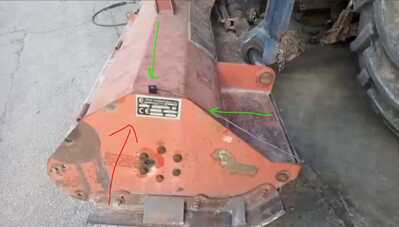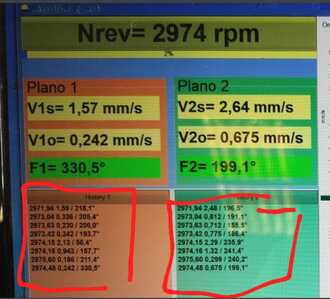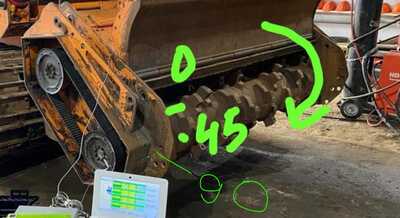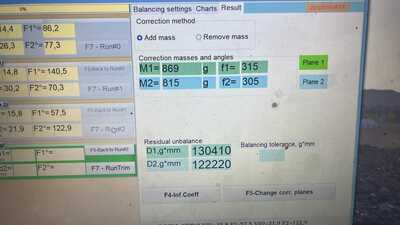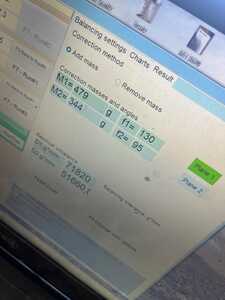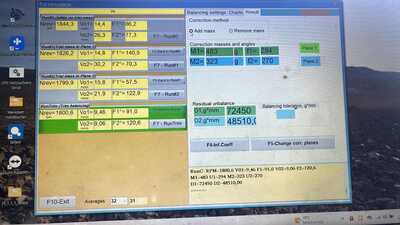Hello!
I purchased your Vibromera (Balanset) balancing device and I have a few questions.
In Run 1, I installed a 420g test weight on side x1. For Run 2, I removed the test weight from x1 and moved it to x2 on the same rotor axis. Then I performed Run 2. After that, I welded the correction weights according to the calculated data (477g at 30° for plane 1 and 274g at 200° for plane 2).
When I performed the final Run Trim, the imbalance actually got worse than it was initially. The initial vibration was Vo1=7.46 mm/s and Vo2=6.79 mm/s, but after installing the correction weights, it increased to Vo1=13.8 mm/s and Vo2=18.0 mm/s.
What could be the reason for this?
Hello!
After reviewing the photos, I noticed that the sensors (accelerometers) are installed incorrectly.
The sensor’s sensitivity axis coincides with the direction of the magnetic base — currently, this is the axial direction, i.e., along the shaft. In this position, the sensor registers vibration along the axis of rotation, which does not meet the requirements for balancing.
The sensors must be installed so that their sensitivity axis is directed perpendicular to the axis of rotation. In other words, the sensor should be mounted on the side or top of the housing (perpendicular to the shaft), not on the end face of the rotor.
As shown in the attached photo.
During balancing, the mulcher must be lifted above the ground.
The tachometer must always be pointed at the same spot throughout the entire operation.
Before starting the balancing procedure, please check the stability of the readings in vibrometer mode.
The values of vibration and phase should remain the same from measurement to measurement.
The angle is measured in the direction of rotor rotation.
The starting point for angle measurement is the position of the trial weight used in the first measurement.
After installing the trial weights, the program calculated the values of the correction masses and angles for two planes:
Plane 1: M1 = 869 g, angle = 315°
Plane 2: M2 = 815 g, angle = 305°
The third measurement was taken after installing the correction weights according to the results of the second step. Is this normal? Or was my trial weight too small?
Everything looks absolutely normal in the screenshot.
After installing the correction weights (RunTrim), the vibration amplitude has decreased significantly:
Vo1 has dropped to 9.46 mm/s
Vo2 to 9.06 mm/s
This is a good result.
I believe that after installing the calculated correction weights (483 g and 323 g) and performing another check, the vibration level will decrease even further, and you will most likely reach the tolerance limit of 4.8 mm/s, which is a good value for field conditions and for this type of machine.
You are doing everything correctly. I would like to note that it is very rare to achieve zero vibration immediately after installing the correction weights.
Usually, 2–3 control runs with adjustment of the mass and angle of the weights are required.
This is standard practice for on-site balancing.





